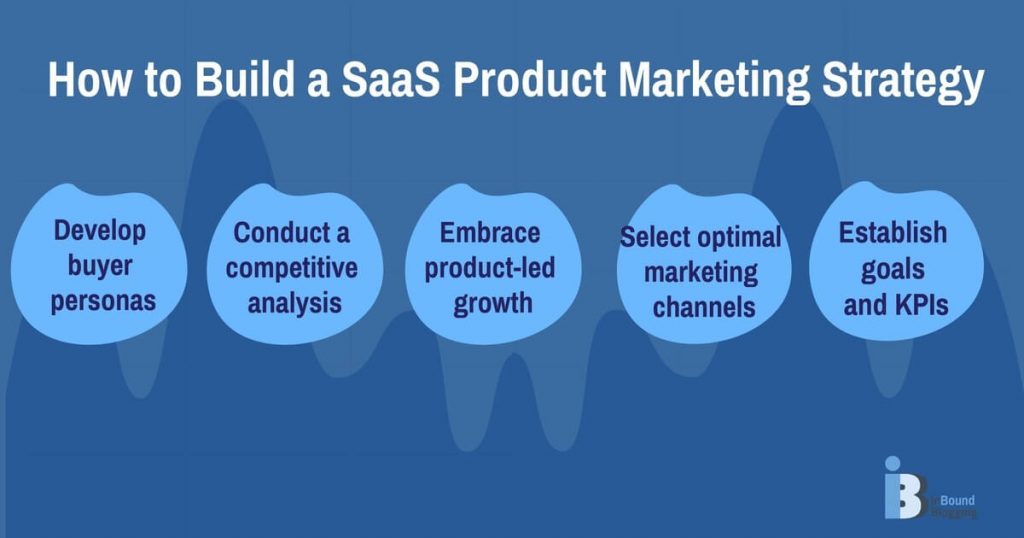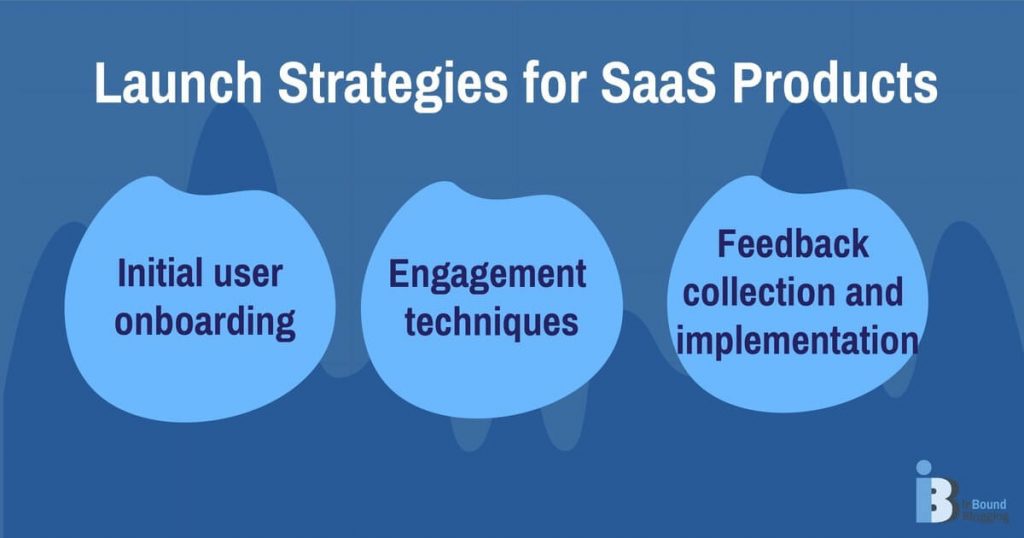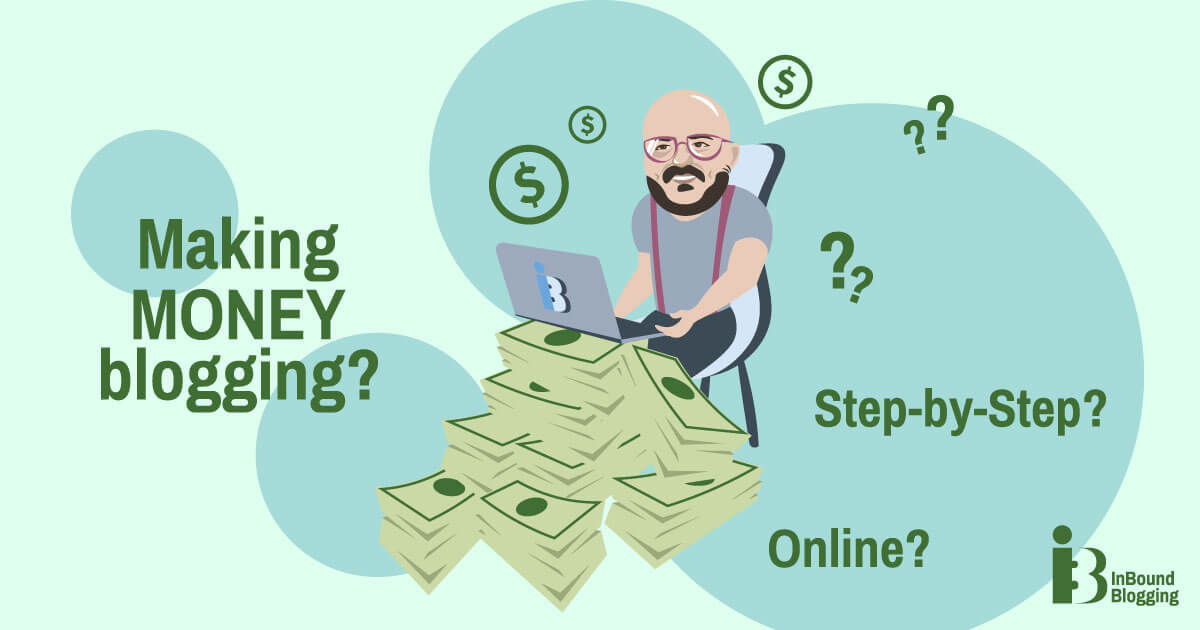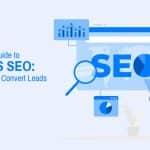Exploring the packed software-as-a-service (SaaS) market may seem like a tough task, and I relate deeply to the struggle. If you want to maximize your marketing efforts, you need to know some “secrets.”
In this guide, I’ll uncover crucial perspectives and tactics to boost the appeal of your SaaS product. From the starting planning phases to fostering its expansion post-launch, learn about the leading SaaS product marketing tips here.
Prepared to upgrade your strategy? Let’s begin.
SaaS Product Marketing [Key Takeaways]
- SaaS product marketing focuses on digital spaces and solving business problems, unlike traditional marketing that emphasizes brand awareness. It involves using strategies like email campaigns, search engine optimization (SEO), and content marketing to connect with users.
- Understanding your audience is crucial in SaaS product marketing. Creating buyer personas based on customer data helps with effective communication.
- Pre-launch strategies involve positioning the product correctly in the market and identifying what target customers want. This includes making use of feedback for improvements.
- To keep users engaged post-launch, employ tactics like interactive onboarding guides, encouraging feedback collection through surveys or direct outreach, and running webinars for deeper education on features.
- Continuous growth relies on refining the product with customer input and employing advanced strategies, such as personalized emails for different user stages, dedicated managers for key accounts, and performance-tracking dashboards to ensure satisfaction over time.
What Is SaaS Product Marketing?
SaaS product marketing is the strategy and activities involved in promoting and selling SaaS products. It focuses on highlighting the software’s value, addressing customer needs, and driving subscription sales through various channels and tactics.
Effective SaaS product marketing involves collaborating with various departments, including product development, content creation, digital marketing, data analysis, customer support, and sales enablement. This cross-functional teamwork helps in understanding customers better and creating robust marketing strategies.
How to Build a SaaS Product Marketing Strategy

To market your software product successfully, it’s crucial to know your target audience and differentiate your product. Here’s a guide on creating an effective marketing strategy.
Develop buyer personas
To effectively market SaaS products, gather customer data, analyze website and social media interactions, and identify patterns. Then create detailed profiles for each persona and tailor marketing messages to their interests and issues. This ensures your SaaS product marketing strategy resonates with the right audience, ensuring the right messages are delivered to the right people.
Conduct a competitive analysis
To stand out in the SaaS market, find your primary competitors, analyze their online visibility, evaluate their product offerings, understand their pricing models, and analyze customer reviews.
Observe their SEO strategies, stay updated on new features and enhancements, and evaluate their sales and marketing funnels. Map their ad campaigns and social media responses to guide your digital marketing approach. Regular analysis will keep you at the forefront and provide insights into how to bypass the competition in B2B SaaS product marketing tactics.
Embrace product-led growth
Product-led growth in SaaS involves using the product to drive customer acquisition, retention, and expansion, offering free trials, and tracking metrics like Acquisition, Activation, Retention, Referral, and Revenue (AARRR). The goal is to turn users into advocates, promoting the product faster. Use AARRR as a guide, but adjust it for RARRA (Refer, Acquire, Retain, Revenue, Activate) strategies.
Select optimal marketing channels
To excel in SaaS product marketing, concentrate on central methods that accentuate your product and attract customers by implementing a robust SaaS product marketing plan. Explore the tactics below for a better understanding.
Boost visibility through SEO
To boost your SaaS’s online presence, dive into SEO. Did you know that 61% of B2B marketers consider SEO and organic presence essential? That’s because a whopping 68% of internet traffic comes from search engines like Google or Bing. By focusing on SEO, you can attract a larger audience to your site.
Start by adding SaaS and inbound marketing keywords to your content and ensuring your site loads quickly and looks great on any device. These tweaks can help your site rank higher in search results, making it easier for potential customers to find you. Aim for those top five spots—they get the most clicks.
“When it comes to SEO for SaaS, content is king, but context is queen. Understanding the search intent behind the keywords your potential customers use can dramatically enhance your organic search visibility. Make sure your content addresses their specific pain points and questions.
Comprehensive guides, tutorials, and case studies not only attract traffic but also provide value, which can improve conversion rates in your SaaS product marketing plan. Don’t overlook technical SEO aspects like site speed, mobile optimization, and clean, intuitive site architecture. These factors significantly impact both user experience and search engine rankings.” — Mary Tung, Founder and CEO, Lido.app
Engage audiences via social media
Connect with your audience through social media—83% of B2B marketers already do. With around 5.17 billion users, it’s a no-brainer. Choose platforms where your audience hangs out, like LinkedIn for networking or Twitter for updates through social media marketing.
Create engaging content like posts, videos, and live sessions to showcase your SaaS. Focus on building relationships and sparking conversations rather than just selling. This engagement can turn followers into loyal customers and advocates for your brand.
“LinkedIn has seen tremendous growth in the digital marketing space in the last ten years, especially in the SaaS space where startups and established brands needed a platform that would allow them to generate qualified leads for their products. For SaaS companies looking to incentivize prospects to book demo calls and sign up for their free trials, the best way is to reach out directly to executives and C-level individuals on LinkedIn.
The most effective way to do this is through personalized and strategic LinkedIn outreach that focuses on the needs and unique pain points of different prospects. Targeted outreach on LinkedIn is on the rise because it’s efficient and effective at generating interested replies from individual decision makers.” — Daria Erina, Managing Director, Linked Helper
Drive engagement with content marketing
Content marketing can make your SaaS brand shine, attracting more traffic and generating leads. Share helpful content like blogs, videos, and guides to solve user problems even before they buy. This builds trust and keeps people coming back.
Mix it up with blogs on industry issues, videos showcasing new features, and newsletters sharing user success stories. This diverse content approach engages your audience and guides them toward a decision without feeling pushed.
Enhance reach with email marketing
Investing in email marketing is a must for boosting your reach. With email newsletters and targeted messages, you can directly connect with your audience in their inbox. Think of it as a direct, effective way to communicate the value of your product or service in a marketing plan for SaaS products.
Automation tools make it easy by scheduling emails, segmenting contacts, and tracking campaign success. This ensures that every message is valuable and engaging, perfect for B2B businesses seeking SaaS solutions.
Are you looking for a reliable email finder? Check out my review of Tomba.io here.
Expand influence with video marketing
Video marketing is unbeatable for promoting SaaS products due to its strong content retention. Focus on instructional and educational videos to show how your product solves problems and improves workflows for B2B companies and startups. Integrating videos into your strategy boosts customer interaction, leading to better engagement and understanding of your product.
Videos simplify complex ideas, helping both newcomers and tech-savvy audiences grasp the value of your SaaS. This approach widens your influence and deepens audience relationships by providing useful, clear instructions.
Establish goals and KPIs
For a successful SaaS marketing plan, setting goals and KPIs is crucial to track progress and measure success. Here’s how SaaS marketers can benefit:
- Define clear, achievable objectives like increasing your user base, improving engagement, or boosting revenue.
- Use direct website visits to see if more people are discovering your SaaS solution.
- Monitor time on site to ensure users find your content engaging.
- Track pages per session to gauge user interest in your offerings.
- Keep an eye on bounce rates for potential landing page issues, as highlighted in any good guide to SaaS.
- Measure the customer acquisition cost (CAC) to see your efficiency in converting prospects.
- Watch activation rates to understand user engagement post-signup.
- Regularly check customer churn to address why users might leave.
- Aim for a high lifetime value (LTV) by nurturing customer relationships.
- Measure the user retention rate to keep existing customers happy.
- Use the SaaS net promoter score (NPS) to gauge customer satisfaction and loyalty.
By following these steps, you’ll ensure your SaaS marketing strategies are data-driven and effective.
Pre-Launch SaaS Marketing Tactics

Before launching your SaaS product, have a solid plan to highlight its best features and why people need it. Focus on positioning, understanding customer needs, and mapping out their journey. This ensures excitement when launch day arrives.
Here are some tips for a successful pre-launch of your software as a service product:
Product positioning
Product positioning is about finding the ideal market spot for your SaaS product. Study successful companies and market needs to elevate your brand and meet demand.
Clearly define what sets your product apart to become the top choice for your target audience’s specific problems. Highlight these unique benefits across all marketing channels to ensure your product is the go-to solution in the competitive software-as-a-service market.
Identify market needs
After defining your product’s stance, investigate market needs deeply. Understand what your clients want by analyzing their behavior to find market gaps your SaaS can fill.
Engage with potential customers—their feedback is invaluable. Use it to tweak your product, ensuring it addresses specific problems. This way, you stand out as the real solution, not just another SaaS option.
Planning the customer journey
The customer journey is crucial for attracting and maintaining SaaS customers. Design stages like awareness, consideration, decision, and loyalty, set objectives, and identify key touchpoints.
Generate content for each stage, use email marketing, apply marketing automation, conduct competitive scrutiny, gather responses, and monitor metrics to ensure smooth progression and consistently add value to SaaS clients.
Launch Strategies for SaaS Products

For SaaS products, a big day is the launch—coordinate closely with your sales team. Plus, think user guides and open feedback loops—they’re key.
Initial user onboarding
Ensure user onboarding is crucial for success in your SaaS product. This is what you need to do:
- Create clear, easy-to-understand welcome emails
- Direct new users to a simple guide
- Keep tutorials engaging
- Offer instant support when needed
- Send follow-up emails
- Use clear milestones
- Collect data on user struggles
Plan each step with care to ensure new users find value quickly and stay with the software.
Engagement techniques
To keep users engaged with your SaaS product, you have to:
- Use email marketing to send regular updates
- Create a user community on platforms like Slack or forums
- Implement retargeting strategies
- Run webinars or live tutorials
- Offer exclusive content like eBooks or industry reports for free
- Launch referral programs
- Use social media for real-time conversations
These tactics help maintain engagement after launch, ensure users see ongoing value in the product, and lead to better retention rates and growth opportunities through word-of-mouth referrals and positive online reviews.
Feedback collection and implementation
To improve SaaS products, gather user feedback through surveys, website feedback forms, social media comments, support ticket analysis, beta tests, user groups, emails, chatbots, and one-on-one calls.
Log feedback in a tracker and prioritize updates based on urgency. Implement marketing automation to send surveys and track responses, and craft retention emails based on customer comments.
This approach ensures product refinement, staying ahead of the curve in B2B SaaS marketing strategies, and making every user feel heard and valued. Utilizing marketing automation can help track trends and craft retention emails tailored to customer feedback.
Post-Launch Growth and Scaling
After launching, the real work begins in marketing for SaaS. Now, you can focus on making your user base bigger and keeping customers happy for a long time.
Advanced onboarding strategies
To ensure customer success and satisfaction in your SaaS business, implement a personalized onboarding strategy.
Along with crafting personalized welcome emails, you can create interactive product tours and video tutorials instead of long text explanations. Assign a customer success manager for enterprise clients to ensure they have direct support for any questions or concerns.
Send targeted retention emails, inform users about regular updates on new features, and encourage them to share their feedback through different channels. Building a community space will give them the chance to share tips, ask questions, and connect with others in their industry.
For power users looking to get even more from your product, offer advanced training sessions that dive deep into complex features or integrations, as recommended in many SaaS product marketing strategies.
Finally, provide your clients with access to dashboards where they can track their progress and see the tangible impacts your software has on their business goals.
These strategies will turn new users into lifelong customers, enhancing retention rates and customer happiness scores.
User retention techniques
To ensure SaaS success and to increase your MRR and SaaS customer retention rate, focus on user retention.
Conduct regular product training sessions, stay open to feedback, and use analytics tools to monitor user behavior. All of this will help you personalize emails with updates or advice based on the user’s consumption patterns.
Furthermore, you can establish a rewards program for long-standing users, like price reductions or access to beta features. Providing round-the-clock customer support, regularly modernizing the product with new features, and publicizing success stories are essential moves as well.
Coordinate webinars to discuss industry developments and align with client requirements, ensuring customer satisfaction and loyalty.
“Make sure both your content and your product are updated based on user feedback and market trends so that they remain relevant and useful.” — Deyan Georgiev, Head of SEO, RapidSeedbox.com
Expansion and upsell tactics
To boost monthly recurring revenue, offer free trials so new users can experience premium features without paying upfront, showing them the value of upgrading.
Analyzing user behavior is a must in this phase as well. It allows you to identify upgrade opportunities by suggesting underutilized features and sending emails with special offers.
Make upgrading easy with one-click options to enhance the value of your product in the app or via email links. Create service bundles for a better deal and share success stories from other customers to highlight benefits.
Last but not least, continually add new features and update old ones to keep the product fresh and appealing.
Marketing Automation in SaaS
Marketing automation can save time and boost efficiency by allowing businesses to reach more customers with less effort. Key actions to implement include:
To build a solid strategy, choose automation tools with email marketing, analytics, and customer relationship management (CRM) features. They simplify tasks and increase the efficiency of your SaaS marketing team.
Here are some examples of what you can accomplish with the right automation tools:
- Monitor website traffic with Google Analytics and SaaS SEO tools to understand visitor behavior.
- Pre-schedule social media posts and assess their impact using Instagram Insights and Twitter Analytics.
- Map customer journeys to enhance your understanding and improve customer interactions.
- Deploy content marketing strategies across automated platforms.
- Generate creative call-to-actions (CTAs) to capture attention and drive action.
- Segment your email list to tailor messages to specific audiences. Email automation helps you to maintain efficient and targeted communication.
- Plan lead nurturing campaigns to guide prospects through the sales funnel.
- Design marketing-to-sales email flows for seamless transitions.
- Develop targeted ads and customize marketing messages to resonate with specific audiences.
- Establish clear goals, test and tweak campaigns, and systematize feedback collection.
Monitor KPIs across all platforms for a comprehensive overview of marketing results. Adopting automation tools is crucial for maintaining a competitive edge and ensuring team efforts yield solid results.
Measuring SaaS Marketing Success
To know if our SaaS marketing works, look at key performance indicators (KPIs). These metrics provide insights into your market position and guide your strategic decisions for improved outcomes:
- Website traffic: Track metrics such as direct visits, time on site, pages per session, and bounce rates using Google Analytics to gauge user engagement.
- Sign-ups: Measure how many users sign up for your service to evaluate the effectiveness of your acquisition strategies.
- Monthly recurring revenue (MRR): Monitor MRR to understand the financial growth and sustainability of your SaaS product.
- Customer acquisition cost (CAC): Calculate CAC to determine how much you’re spending to acquire each new customer and assess the efficiency of your marketing efforts.
- Churn rate: Analyze the SaaS churn rate to see how many customers are leaving your service, which indicates product satisfaction and market fit.
- Customer retention rate (CRR): Track CRR to measure how well you’re retaining customers, reflecting long-term success and customer loyalty.
- Social media engagement: Monitor interactions on social media to gauge brand awareness and audience engagement.
- Email metrics: Evaluate email open rates, click-through rates, and conversion rates to measure the effectiveness of your email campaigns.
However, metrics alone don’t tell the whole story. Conduct customer surveys, analyze sales data, compare before and after results, and assess SaaS retention rates. And, of course, analyze competitors’ marketing strategies and regularly review your company’s profit and loss statements to align marketing efforts with financial outcomes.
Conclusion
Mastering SaaS product marketing involves understanding users and developing effective strategies like SEO, social media, and email. Constant efforts to maintain customer interest and satisfaction are crucial for demonstrating product value and driving customer acquisition.
Tools like marketing automation can help scale these measures efficiently. Prioritizing these tactics ensures product growth.
FAQ
What is the role of product marketers in SaaS marketing?
Product marketers in SaaS focus on showcasing the value of the product to potential customers. They guide the creation of an effective content marketing strategy, ensuring it aligns with current trends and resonates with the target audience.
Why do I need a dedicated SaaS product marketing team?
A specialized team understands best practices for B2C or B2B SaaS product marketing. They are adept at creating and executing effective SaaS marketing campaigns that highlight your SaaS brand.
Can I use traditional product marketing strategies for my SaaS business?
While some elements may overlap, there are distinct differences between traditional and SaaS product marketing. Considering its cloud-based nature, effective SaaS marketing often involves more targeted approaches, such as personalized email campaigns, behavior-driven automation, and data-driven customer segmentation.
What makes an effective SaaS content marketing strategy?
An effective SaaS content marketing strategy must be customer-centric, focusing on the user’s needs while demonstrating the value of your software solution. Clear and concise information is fundamental.



